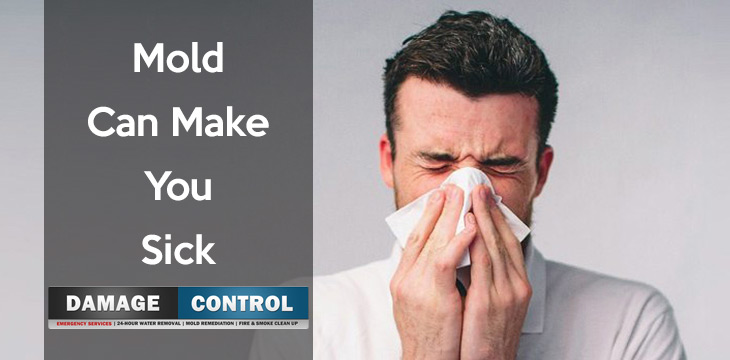Mold can make you sick, which has been recognized as a common health hazard. Mold is a fungus that can grow in damp and humid environments, and exposure to it can trigger allergic reactions, respiratory problems, and even chronic health issues.
To learn more about the dangers of mold exposure, check out our article on the history of mold as bioweapons if you have doubts about the severity of the issue.
Now that you understand the gravity of the issue let's dig in and see where the facts lead us.
What is Mold and How Does it Grow?
Mold is a type of fungus that thrives in damp and humid conditions. It can grow on various surfaces, including wood, carpet, and even food.
Mold reproduces by releasing tiny spores into the air, which can travel through the environment and settle on other surfaces.
There are many different types of mold, each with its own unique characteristics and impact on human health.
Some common types of mold include Aspergillus, Cladosporium, Stachybotrys, or black mold. Mold exposure can cause various health problems, from mild allergic reactions to more severe respiratory issues and infections. Even your dogs are not immune to mold-related illnesses.
Signs and Symptoms of Mold Exposure
Mold exposure can cause a range of health problems, and the signs and symptoms of exposure can vary widely depending on the individual and the severity of the exposure.
Respiratory issues are among the most common symptoms of mold exposure, including coughing, wheezing, and difficulty breathing. Mold exposure can also cause skin irritation, such as rashes and hives.
In addition to these symptoms, mold exposure can lead to recurring or never-ending headaches, fatigue, and general malaise.
It is important to note that the symptoms of mold exposure can affect individuals differently, and some people may be more sensitive to mold than others.
If you suspect that you have been exposed to mold, it is important to be aware of the signs and symptoms of exposure. These can include, but are not limited to the following list of the most common symptoms of mold exposure:
- Respiratory issues such as coughing, wheezing, and difficulty breathing
- Skin irritation, such as rashes and hives
- Headaches
- Fatigue and weakness
- Irritation of the eyes, nose, and throat
- Difficulty concentrating
- Memory problems
- Mood swings and anxiety
If you're already experiencing one or more of these symptoms, don't worry; there are treatment options for each type of mold you've been exposed to. We'll give you options for exposure at the bottom of this article, but it's important to read this entire article before worrying about treatment options.
Causes of Mold Exposure
Mold exposure can occur in various settings and can be caused by many factors. Environmental factors such as humidity and moisture are key contributors to mold growth and can lead to increased mold exposure in living spaces.
Factors influencing mold flourishing, such as poor ventilation and inadequate insulation, can also contribute to mold growth, as can lifestyle choices, such as using humidifiers or not properly ventilating bathrooms, kitchens, and laundry rooms.
Certain occupations and living situations can also increase the risk of mold exposure, such as those working in industries that involve water damage or living in homes with a history of flooding or water damage.
Treating Mold Exposure
If you suspect that you have been exposed to mold, it is important to take action to protect your health. Cleaning and disinfecting living spaces can help to remove mold spores and prevent further growth.
Improving air quality can also help to reduce mold exposure by using air purifiers or turning on your heating or air conditioner. Both of these systems act as dehumidifiers.
Do not open windows o doors unless the humidity levels are well below 50%, or you'll make matters worse.
In some cases, medical attention may be necessary to address the health effects of mold exposure. If you are experiencing persistent respiratory issues or other symptoms, it is important to consult with a healthcare professional.
Your doctor will be able to test you for mold exposure and recommend a course of treatment.
Prevention is key when it comes to mold exposure.
Taking steps to prevent mold growth, such as fixing leaks and addressing moisture issues, can help to protect your health and prevent future exposure. To learn more about how to treat mold exposure and protect yourself from its harmful effects
Conclusion
In conclusion, mold exposure is a common health hazard that can seriously impact our health. Understanding the causes and symptoms of mold exposure and how to prevent and treat it is essential for protecting ourselves and our loved ones.
Throughout this article, we have covered a range of topics related to mold exposure, including its causes and symptoms, as well as steps that can be taken to prevent and treat it.
We have also discussed the importance of seeking medical attention if you suspect you have been exposed to mold and of taking action to address mold growth in your living spaces.
Remember, prevention is key when it comes to exposure, and taking steps to address moisture issues and improve ventilation can go a long way in keeping you and your loved ones safe and healthy.

